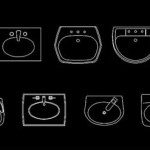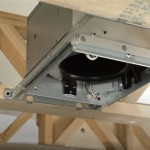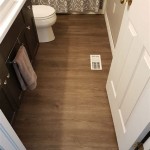How to Fix Old Bathroom Fan
Over time, bathroom fans, like any household appliance, can start to malfunction. They might become noisy, run inefficiently, or even stop working entirely. While replacing the fan is always an option, troubleshooting and repairing an old fan can be a cost-effective solution. This article will guide you through common bathroom fan problems and offer practical steps to fix them.
Identifying the Problem
The first step in fixing an old bathroom fan is identifying the issue. It is important to understand the symptom you are experiencing to determine the most appropriate repair method. Here are some of the most common bathroom fan problems:
- Noise: Excessive noise can stem from loose parts, bearing wear, or motor issues.
- Slow or Inefficient Operation: This could indicate a clogged fan blade, a worn-out motor, or a faulty switch.
- Complete Failure: If the fan does not turn on at all, the problem could be with the motor, switch, or wiring.
Once you have identified the problem, you can begin troubleshooting.
Troubleshooting and Repairing
Once you have a better understanding of the problem, you can apply the following troubleshooting and repair steps:
1. Cleaning the Fan
A buildup of dust and debris can clog the fan blades and impede airflow, leading to noise and inefficiency. Regularly cleaning the fan can significantly improve its performance.
- Disconnect Power: Before you begin, turn off the power to the fan at the circuit breaker.
- Remove the Fan Cover: Most bathroom fans have a removable cover. Use a screwdriver to loosen the screws holding it in place.
- Clean the Blades and Housing: Use a vacuum cleaner with a brush attachment or a damp cloth to remove dust and dirt from the fan blades, housing, and motor.
- Replace the Cover and Restore Power: Once the fan is clean, reattach the cover and turn the power back on.
2. Checking the Motor and Bearings
If the fan is still noisy after cleaning, the problem might be with the motor or bearings.
- Inspect the Motor: Look for signs of wear, damage, or loose connections. If the motor is visibly damaged, replacement is likely necessary.
- Lubricate the Bearings: If the fan is noisy due to worn bearings, you can try lubricating them with a light oil, such as sewing machine oil. Apply a small amount of oil to the bearings, making sure not to over-lubricate.
3. Testing the Switch
A malfunctioning switch can prevent the fan from turning on. This can be tested with a multimeter.
- Disconnect Power: Turn off the power to the fan at the circuit breaker.
- Test the Switch: Use a multimeter to check the continuity of the switch. If the switch is not working properly, it will need to be replaced.
4. Checking the Wiring
Faulty wiring can also cause the fan to malfunction. Inspect the wiring for signs of damage or loose connections.
- Disconnect Power: Make sure the power to the fan is turned off.
- Inspect the Wiring: Check for frayed wires, loose connections, or any other signs of damage.
- Repair or Replace Wiring: If the wiring is damaged, it should be repaired or replaced by a qualified electrician.
Professional Assistance
If you are uncomfortable troubleshooting or repairing the fan yourself, it is always advisable to seek professional assistance. An electrician can diagnose the problem accurately and perform the necessary repairs safely and efficiently.

My Bathroom Exhaust Fan Didn T Work And I Find Out Why Retro Renovation

How To Repair A Bathroom Fan Diy Family Handyman

Bath Fan Replacement In 10 Minutes Or Less

Bath Fan Broke You Can Fix It

Bathroom Fan Motor Repair And Replace

How To Install A Bathroom Fan Diy Family Handyman

Is Your Bathroom Exhaust Fan Working Efficiently Multi Trade Building Services

Remove Install A Bathroom Fan Grille In 1 Min

How To Replace The Ceiling Exhaust Fan And Light In Bathroom

5 Reasons Bath Fans Have Such Poor Air Flow Energy Vanguard
Related Posts







